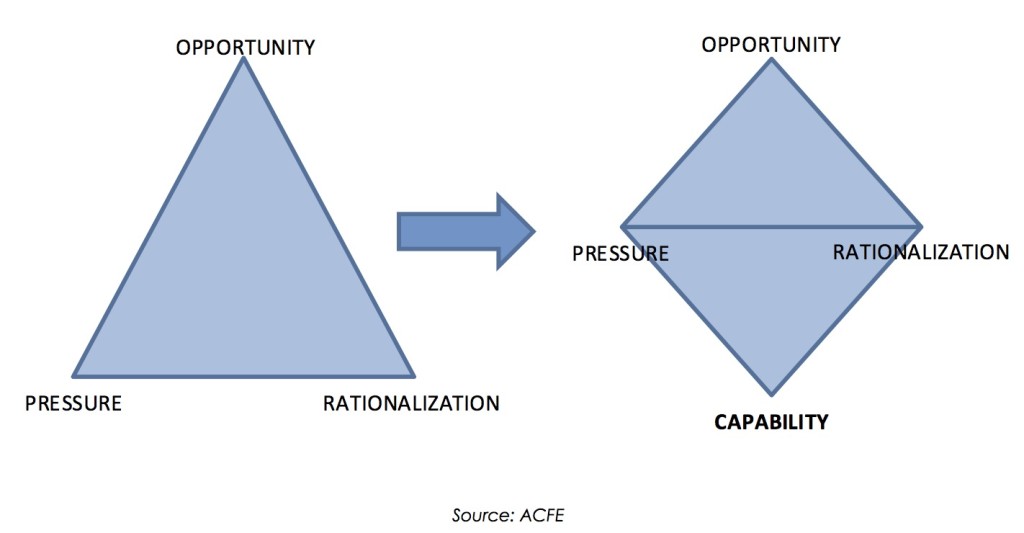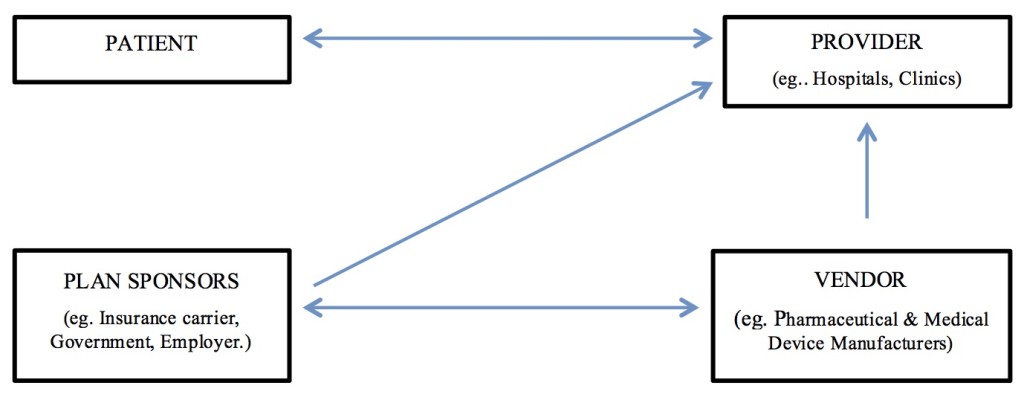
Source: www.romanowskylaw.com
According to the Association of Certified Fraud Examiners (ACFE) Report to the Nations, on Occupational Fraud and Abuse 2014, Healthcare is ranked fourth in the industry classification list of victim organizations. Being basic necessity providers and vital resource to the economy, Healthcare is a service driven cash rich industry which (like any other) is prone to Fraud and Abuse. The shadow of strict regulations and compliance protocols worldwide do not do much justice to stakeholders involved as enforcement and implementation remain at an all-time low.
The European Healthcare Fraud and Corruption Network estimates that RM1.3 trillion is lost globally due to Healthcare Fraud each year. Whereas, the Economist states that the United States (US) alone reports that approximately 10% or RM221.6 billion of its annual allocation for Medicare and Medicaid is skimmed (off the book theft).
Looking at figures closer to home, staggering results were reported in The Financial Cost of Healthcare Fraud 2011 Report by University of Portsmouth which claimed that 7-10% of our national allocation of RM14.4 billion is leaked annually due to Fraud.
What is Healthcare Fraud?
It is an intentional act of deceit, concealment or violation of trust perpetrated by individuals or organizations to obtain personal (financial/non-financial) benefits or to secure competitive advantage in the Healthcare industry.
How is Healthcare Fraud different from Healthcare Abuse?
| Healthcare Abuse | Healthcare Fraud |
| Substandard Practices | False statement/claims |
| Payment for services that did not meet professional standards | Elaborate schemes |
| Failure to meet coverage | Cover up strategies |
| Intentional misrepresentation |
Why commit Healthcare Fraud?
The diagram below depicts “the Fraud Triangle by Donald Cressey” which explains circumstances and rationale behind occupational fraud. The triangle was later replaced with “the fraud diamond” as more scholars believed that a fourth element was required as well, without disregard for the former model.

Opportunity is when a perpetrator sees the chance to use/abuse his position of trust for personal gains with the belief that he could easily get away with it. This could stem out of weak internal controls or lack segregation of duty within specific functions.
Pressure encompasses the need or greed which motivates a perpetrator to commit an act for or against the organization. This could stem out of personal financial needs, extreme Key Performance Indicators (KPIs), frustration or challenge to beat the system.
Rationalization is the set of ethical values or attitudes which allows a perpetrator to knowingly/intentionally commit a dishonest act. Such thoughts include “I’m only borrowing and will pay it back”, “it’s not hurting anyone,” or “they owe me anyway.”
Capability is the experience and knowledge a person has which puts him/her in a position to overwrite controls and get away with a dishonest act for or against the organization.
Who are the players in the Malaysian Healthcare environment and where does the Fraud occur?

Patients are the consumers of the healthcare service/product who could involve themselves into a couple of schemes such as submitting false claims for services not rendered, colluding with doctors to submit multiple claims, or participating in “Rent a Patient” exercise where a fraudster pays individuals to undergo unnecessary medical procedures that are then billed to the patient’s health care program (made famous in the US). ‘Doctor-shopping’ is another scheme whereby a fraudster visits multiple clinicians for the same illness to obtain prescription drugs illegally.
Providers are the individuals or entities that deliver or execute the healthcare service/product. Types of schemes here could include submitting false claims for services not rendered, controlled substance abuse, false cost reports, kickbacks, unbundling (breaking down an operating procedure into smaller procedures to charge a higher price) and blatant misrepresentation.
Plan sponsors are the parties who fund the transactions when consumer is delivered a certain service/product (usually an insurer). Types of schemes here include misrepresenting negotiated performance offers, underreporting number of employees and payroll information to obtain favourable rates and not providing coverage stated in sold policies.
Vendors are entities that provide professional service/materials used in delivery of patient care. Types of schemes here are claims for altered products, counterfeit drugs, collusive behaviour among entities and off-label marketing of drugs.
What are the red flags (fraud indicators) to look out for at each player position?
Patient
- Patient not disclosing to provider about other health insurances;
- Patient complains about pain and requesting a specific drug without talking about symptoms;
- Patient misrepresenting information in order to receive specific treatment.
Provider
- Billing for non-existent patients;
- Patient receiving unnecessary service or treatment;
- Billing for patient which did not come to an appointment;
- Clinician that submits bills for 24-hours or more in a single day;
- Billing for services on off days and holidays;
- Patient complaining on records showing services he/she did not receive;
- Inadequate controls being overridden;
- Missing/altered documentation by employees;
- Employee inappropriately using company equipment (telephone, copier, computers);
- Employee working unusual hours;
- Unexplained spikes in performance measures;
- Accounting or deliverables irregularities;
- Larger volume of prescription drugs billed than expected for the allowed injury type;
- No change in treatment regimen or no measurable improvement after an extended period;
- Frequency of treatments or duration of treatment period is greater than expected for allowed injury type.
Payer
- Failure to acknowledge and act promptly with respect to claims arising out of insurance policies;
- Refusing to pay claims without conducting reasonable investigation;
- Failing to promptly provide explanation for denials of claim;
- Attempting to settle claims for amount lesser than what should be entitled.
Vendor
- Medication seems diluted from previous batch;
- Equipment being overcharged compared to usual pricing;
- Drugs billed does not fit description provided (Substituting brand name drugs for generic drugs);
- Same pricing for same products with differential packaging.
What are the prevention steps that can be taken to mitigate risk of fraud at each player position?
- Build an ethical climate by encouraging/incentivizing honest conduct and reprimanding dishonesty;
- Conduct Fraud Risk Assessment (review every six (6) moths) to determine high, medium and low risk areas before assigning controls;
- Assign proper segregation of duties at each functional level;
- “Tone from the top”, ensure that top level communicates firm message against fraud;
- Establish clear Code of Conduct;
- Place proper Internal control mechanism at both enterprise and departmental level;
- Conduct thorough pre-employment screening when hiring staff for high risk positions;
- Screen suppliers and third parties for any connections with procurement staff (every (6) six months);
- Watch out for “red flags” fraud indicators.
Mr. Raymon Ram is a Council Member of the Association of Certified Fraud Examiners (ACFE) – Malaysia Chapter. For enquiries, please contact raymon@rimbuncapital.com.
References:
- Ohio.Gov,. ‘Ohiobwc – Basics:Â Fraud Red Flags’. Web. 18 May 2015.
- Gee, Jim, Dr. Mark Button, And Graham Brooks. The Financial Cost Of Fraud What Data From Around The World Shows. 1st Ed. University Of Portsmouth, 2011. Web. 18 May 2015.
- Ibrahim, Dr. Lailanor. Country Case Study Country Case Study Report , Malaysia. 1st Ed. Kyoto, Japan: Planning & Development Planning & Development Division, Ministry Of Health, 2007. Web. 18 May 2015.
- Malaysia: Investment In The Services Sector Medical And Healthcare Services. 1st Ed. Kuala Lumpur: N.P., 2012. Web. 18 May 2015.
- Medicare Fraud & Abuse Prevention, Detection, And Reporting. 1st Ed. Department Of Health And Human Services, 2014. Web. 18 May 2015.
- Moore, Malcolm. ‘China Fines Glaxo £297m For Bribery, Mark Reilly Sentenced’. Co.Uk. N.P., 2014. Web. 18 May 2015.
- National Conference Of State Legislatures,. ‘Medicaid Fraud And Abuse’. N.P., 2013. Web. 18 May 2015.
- Office Of Medical And Scientific Justice,. ‘Another 18 People Arrested In Glaxosmithkline China Scandal’. N.P., 2013. Web. 18 May 2015.
- Quiggle, James. ‘Articles On Insurance Fraud: Healers Or Stealers?’. Coalition Against Insurance Fraud. N.P., 2003. Web. 18 May 2015.
- Rogers, Simon. ‘Healthcare Spending Around The World, Country By Country’. The Guardian. N.P., 2012. Web. 18 May 2015.
- Org,. ‘$12m In Counterfeit Drugs Seized In Southeast Asia’. N.P., 2010. Web. 18 May 2015.
- Tracey, Meredith. ‘A Full Timeline Of The Gsk Bribery Scandal|Pm360’. Pm360online.Com. N.P., 2014. Web. 18 May 2015.
- Vian, Taryn. ‘Review Of Corruption In The Health Sector: Theory, Methods And Interventions’. Health Policy And Planning 23.2 (2007): 83-94. Web. 18 May 2015.
- Com,. ‘Timeline Of Accounting Scandal At Healthsouth (Washingtonpost.Com)’. N.P., 2004. Web. 18 May 2015.
[This article belongs to The Malaysian Medical Gazette. Any republication (online or offline) without written permission from The Malaysian Medical Gazette is prohibited.]
